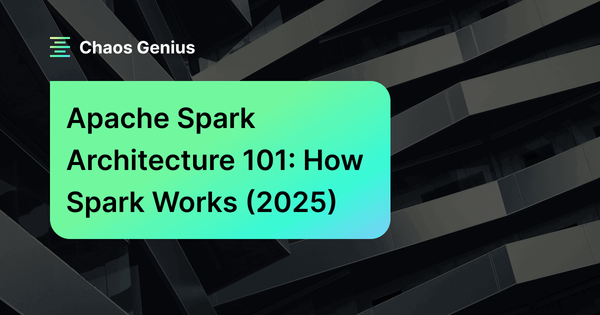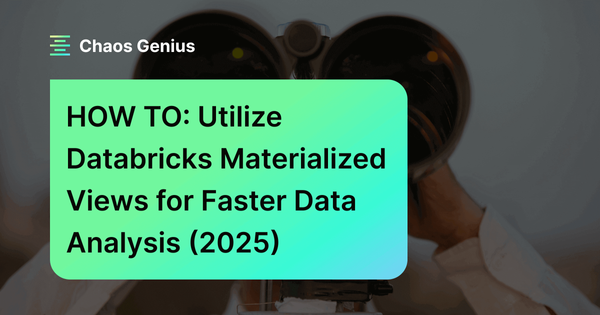Data processing architectures have rapidly evolved in recent years to satisfy the needs of modern data analytics. These architectures lay the groundwork for how data is brought in, processed, and ultimately delivered. For a while, many organizations leaned on traditional architectures, which often struggled to keep up with the need for instant insights in today’s fast-paced world. As data volumes swelled, these older systems just couldn’t cut it. That’s where newer architectures like Kappa and Lambda came into play.
In this article, we will compare both Kappa vs Lambda Architectures, examining their differences, use cases, and the pros and cons of each.
Let’s compare Kappa and Lambda architectures!
What Is Lambda Architecture?
Lambda Architecture was first introduced by Nathan Marz in 2011. It is a data processing architecture designed to handle large volumes of data through a combination of batch and real time processing. It provides a robust solution for organizations that require both comprehensive data analysis and immediate insights from streaming data.
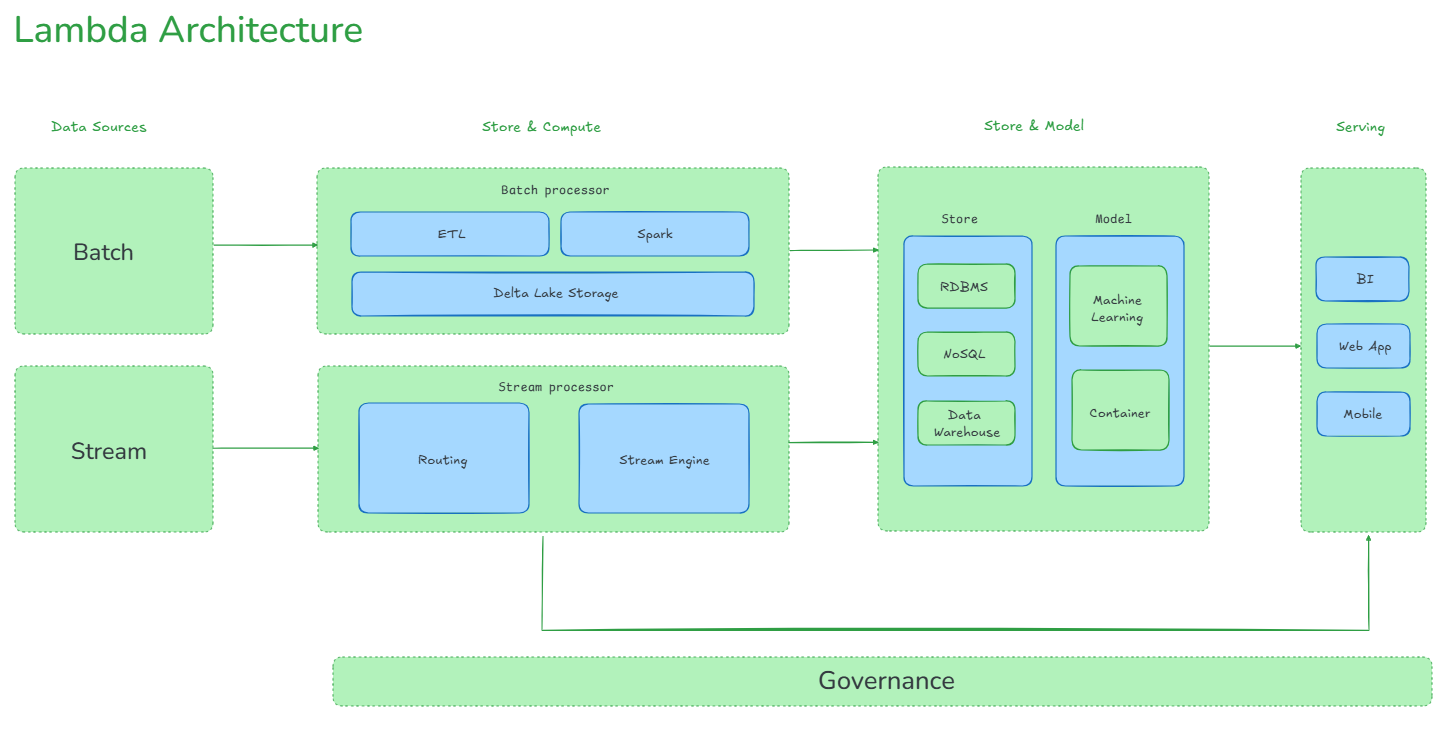
Lambda Architecture is composed of three layers:
- Batch layer: Processes historical data in large batches for accuracy and completeness.
- Speed layer: Processes incoming data in real time for low latency insights.
- Serving layer: Combines outputs from both layers to provide a unified view of the data.
Check out the article below for an in-depth look at Lambda Architecture.

What Is Kappa Architecture?
Kappa Architecture was introduced by Jay Kreps, one of the co-creators of Apache Kafka. It is a simplification of Lambda Architecture and aims to eliminate the complexity of maintaining two separate data processing paths (batch and stream) by treating all data as streams. In Kappa Architecture, both real time data processing and processing of historical data are performed using a single stream processing engine.
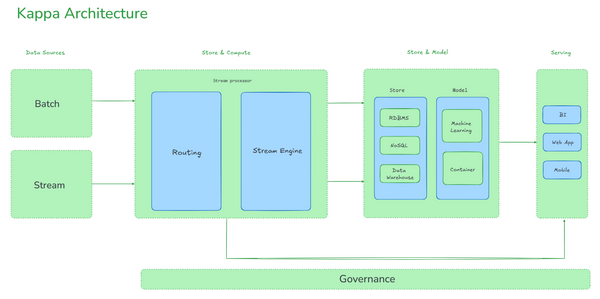
Core components of Kappa Architecture:
- Data sources: Real time data feeds (e.g., IoT sensors, files, databases, social media, logs, events…).
- Streaming processing engine: Processes incoming data using various tools.
- Data store: Stores processed data.
- Applications: Utilize processed data for analytics, dashboards, ML models, etc.
Check out the article below for an in-depth look at Kappa Architecture.
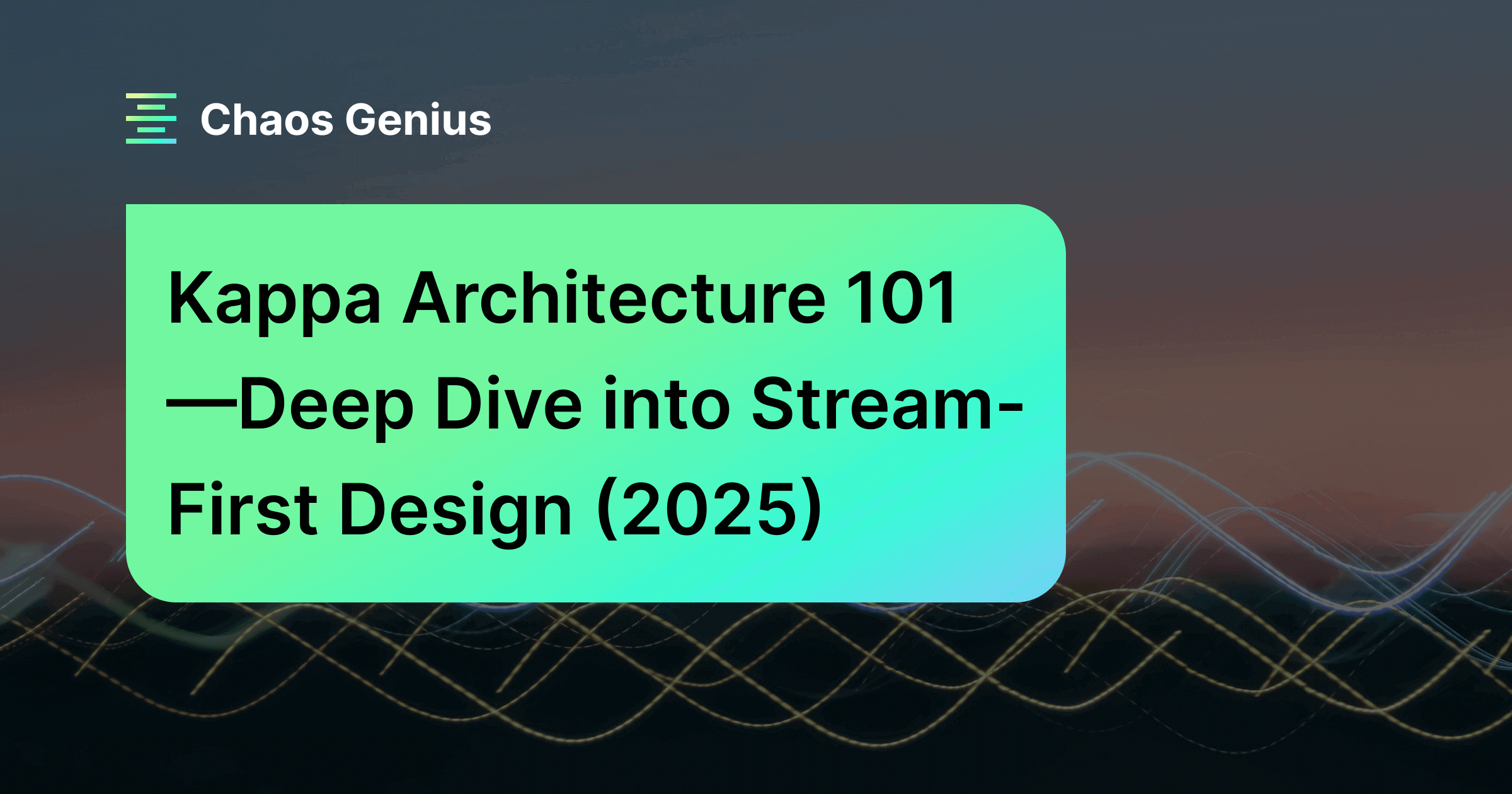

Want to take Chaos Genius for a spin?
It takes less than 5 minutes.

Kappa vs Lambda Architecture
What Is the Difference Between Lambda and Kappa Architecture?
To understand the key differences between Kappa vs Lambda Architectures, let's compare them across several crucial aspects:
| Lambda Architecture | Kappa Architecture |
|---|---|
| Lambda Architecture utilizes two separate data processing paths—batch (cold path) and stream (hot path). This allows for processing both real-time and historical data using different frameworks | Kappa Architecture uses a single stream processing path, eliminating the need for separate batch processing. All data, including historical data, is processed as a continuous stream |
| Batch processing in Lambda handles large volumes of historical data with high accuracy but at higher latency. Stream processing provides real-time insights with lower accuracy | Stream processing is used for both real-time and batch-like workloads. Historical data can be reprocessed from the stream if needed, simplifying the data processing pipeline |
| Lambda Architecture is more complex due to the need to maintain and synchronize two different processing frameworks, leading to code duplication and potential discrepancies between batch and stream results | Kappa Architecture is simpler as it relies on a single processing framework, reducing the need for maintaining separate codebases. However, managing large volumes of data in a single stream can still be complex |
| Lambda Architecture involves separate storage for batch processing (often a distributed file system) and stream processing (typically a real-time database or cache) | All data is stored and processed in a unified log or stream, often using platforms like Apache Kafka. Separate long-term storage is not a core part of the architecture |
| Lambda Architecture is suitable for scenarios where both real-time insights and accurate historical analysis are needed, such as fraud detection and recommendation systems | Kappa Architecture is best suited for real-time data processing scenarios where simplicity and quick adaptation to changes are critical, such as IoT data processing and real-time analytics |
| Lambda Architecture provides flexibility to handle both real-time and batch processing separately, optimizing each layer | Kappa Architecture offers simplicity in maintenance and operation with a single data processing pipeline, making it easier to adapt and scale for real-time processing |
| Lambda Architecture exhibits high complexity and maintenance overhead due to its dual pipelines. Also, there may be issues with data consistency between batch and stream outputs | Kappa Architecture incurs potentially higher storage costs and complexity when managing continuous streams, particularly when dealing with large historical datasets |
When to Choose Lambda Architecture?
Lambda Architecture is best suited for use cases that require both batch and real time processing capabilities. The following scenarios are ideal for Lambda Architecture:
- If your application requires analyzing vast amounts of historical data along with real time data streams, Lambda Architecture provides the necessary tools to handle both efficiently.
- Lambda Architecture allows for the reprocessing of data in the batch layer, enabling you to correct errors or update business logic without affecting real time processing.
- Lambda’s dual-layer approach makes it highly fault-tolerant. If the speed layer fails to process data accurately, the batch layer can reprocess the data to ensure consistency.
What Are the Pros and Cons of Lambda Architecture?
Pros of Lambda Architecture:
- Handles both historical and real time data effectively.
- Enables in-depth analysis of large datasets over time.
- Allows data error fixes and logic updates without disrupting real time operations.
- Independent batch and speed layers enhance overall system reliability.
- Batch and speed layers can be scaled independently to meet varying demands.
- Accommodates a wide range of data processing tools and technologies.
Cons of Lambda Architecture:
- Multi-layered design (batch, speed, serving) complicates implementation and maintenance.
- Requires extensive coding to handle both batch and real time processing.
- Reorganizing or moving data across layers is difficult and requires careful planning.
- Maintaining separate resources for batch and speed layers increases expenses.
- Logic often needs to be duplicated across different layers, complicating updates and consistency.
When to Choose Kappa Architecture?
Kappa Architecture is ideal for scenarios where real time data processing is the primary requirement and batch processing is unnecessary. The following use cases are well-suited for Kappa Architecture:
- If your application demands continuous real time processing with low latency, Kappa Architecture provides a streamlined solution.
- Kappa Architecture simplifies data processing by eliminating the batch layer, making it easier to maintain and scale.
- Kappa Architecture guarantees consistent data processing by relying on a single stream processing layer, eliminating the difficulties associated with managing various codebases.
What Are the Pros and Cons of Kappa Architecture?
Pros of Kappa Architecture:
- Single processing layer for all data reduces overall system complexity.
- Eliminates batch processing, enabling real time updates and faster insights.
- Single pipeline design makes it easier to manage increasing data volumes.
- Can lower infrastructure and operational costs by eliminating separate batch layer.
- Single technology stack simplifies testing, debugging, and development processes.
Cons of Kappa Architecture:
- Initial setup requires a deep understanding of distributed systems and stream processing.
- Primarily storing raw data may increase risk of data loss without robust backup strategies.
- May be slower for historical data queries compared to batch-optimized systems.
- Less mature than traditional batch systems, potentially limiting tool availability.
- Ensuring exactly-once processing can be more complex, challenging data consistency.
Breaking Down the Trade-offs—Kappa vs Lambda Architecture
So you're trying to choose between Kappa vs Lambda Architectures? Here are some things to think about:
1) Latency: Speed vs Delay—Kappa vs Lambda Architecture
Kappa Architecture is perfect for when you need to process data super fast. It processes data as it arrives, giving you instant insights. Lambda Architecture can do real time processing too, but it's got a slower batch layer that may introduce additional latency. It's better for situations where some delay is acceptable in exchange for the ability to handle complex queries and extensive data.
2) Handling Data Volume and Speed—Kappa vs Lambda Architecture
Lambda Architecture is perfect for applications that deal with massive volumes of data. It's super efficient because it breaks down huge datasets into batches, handling them in the batch layer, while the speed layer takes care of real time data. On the other hand, Kappa Architecture focuses solely on real time processing. It's perfect for use cases with moderate data volumes that can be processed continuously, simplifying the system by eliminating the need for batch processing.
3) Complexity: Simplicity vs Flexibility—Kappa vs Lambda Architecture
Kappa Architecture keeps things simple with just one processing layer for real time data. This means less hassle and easier maintenance. On the other hand, Lambda Architecture has two separate paths to manage: batch and stream layers. That's more flexibility, but it also means more work and resources for upkeep.
4) Historical Data Analysis Capabilities—Kappa vs Lambda Architecture
Lambda Architecture is perfect for situations where you need to dig deep and perform historical data analysis. It's got a batch layer that handles historical data, which means you can do super detailed analytics and reporting. Kappa Architecture, on the other hand, is all about real time data, so it's not effective for historical data analysis due to its single-stream processing approach.
5) Cost Implications—Kappa vs Lambda Architecture
Lambda Architecture can cost you more since you need two separate processing systems —one for batch and one for stream processing. This means you'll need more storage and processing power. Kappa Architecture, on the other hand, might be a more budget-friendly option. With Kappa, you only need one system that handles real time data. But you'll need a stronger stream processing system to deal with the constant flow of data.
TL;DR: Kappa Architecture is generally preferable for real time processing and simpler management. Lambda Architecture, on the other hand, is better for handling massive amounts of data, digging deep into historical analysis, and situations where you have to deal with extra complexity.
Further Reading
- Lambda Architecture Basics (Databricks)
- Lambda Architecture (Snowflake)
- Lambda Architecture (Wikki)
- Databricks Delta Lake 101
- Kappa Architecture (Data Engineering Hub)
- Questioning the Lambda Architecture
- Lambda Architecture 101—Unpacking Batch, Speed & Serving Layers
- Real-time Data processing Architectures: Lambda vs. Kappa
Save up to 30% on your Snowflake spend in a few minutes!


Conclusion
And that’s a wrap! Lambda Architecture excels at handling both real time and historical data, offering comprehensive analytics. However, its complexity and potential inconsistencies can be drawbacks. On the other hand, Kappa Architecture simplifies data processing by focusing on real time streams. It's ideal for rapid insights but might struggle with large-scale batch operations and complex historical analysis. The best choice depends on a few factors: data volume, velocity, latency needs, consistency, complexity, cost, and team expertise. So choose your architecture wisely.
In this article, we have covered:
- What is Lambda Architecture?
- What is Kappa Architecture?
- What are the differences between Kappa vs Lambda Architectures?
- When to choose Lambda Architecture?
- When to choose Kappa Architecture?
- Breaking down the trade-offs—Kappa vs Lambda Architecture
… and more!
FAQs
What is Kappa Architecture?
Kappa Architecture is a simplification of Lambda Architecture that removes the batch layer entirely, focusing only on real time stream processing. It is ideal for use cases where real time data ingestion and processing are paramount.
What are the advantages of Kappa architecture?
Kappa architecture reduces complexity by eliminating the batch layer, which can lead to lower maintenance costs and faster deployment for real time data processing tasks.
Is Kappa architecture more cost-effective than Lambda?
Yes, Kappa can be more cost-effective due to its simpler architecture and reduced operational overhead, but this depends on the specific use case and scale of data processing required.
What is the lambda architecture concept?
Lambda Architecture is a data processing architecture designed to handle massive quantities of data by combining batch and real time processing. It uses separate layers for batch and speed processing, ensuring low-latency outputs while allowing reprocessing of data.
What are the three layers in Lambda Architecture?
Lambda architecture consists of three main layers: the batch layer (for large-scale data processing), the speed layer (for real time processing), and the serving layer (which queries and combines outputs from both layers).
Can Kappa architecture support large-scale data processing?
Yes, Kappa can support large-scale data processing, but it may struggle with compute-intensive tasks that require complex aggregations or historical data analysis.
Can Lambda architecture be used for real time analytics?
Yes, Lambda architecture is often used for real time analytics, leveraging the speed layer for immediate insights while the batch layer provides more comprehensive analysis over time.
What are the use cases for Lambda architecture?
Some common use cases include fraud detection, recommendation systems, and real time analytics in environments where both real time and historical data processing are necessary.
How does Lambda architecture scale?
Lambda architecture can scale horizontally by adding more nodes to the batch and speed layers, though this scaling can be complex due to the architecture’s inherent dual-layer design.
What are the limitations of Lambda Architecture?
Lambda Architecture can be complex due to maintaining separate batch and real-time processing systems. It may involve extensive coding, higher costs for resources, and difficulties in maintaining consistency between batch and stream outputs.
How does Kappa architecture handle scaling?
Kappa architecture scales by distributing stream processing across multiple nodes, typically using distributed processing frameworks, which can efficiently manage real time data ingestion and processing at scale.












































